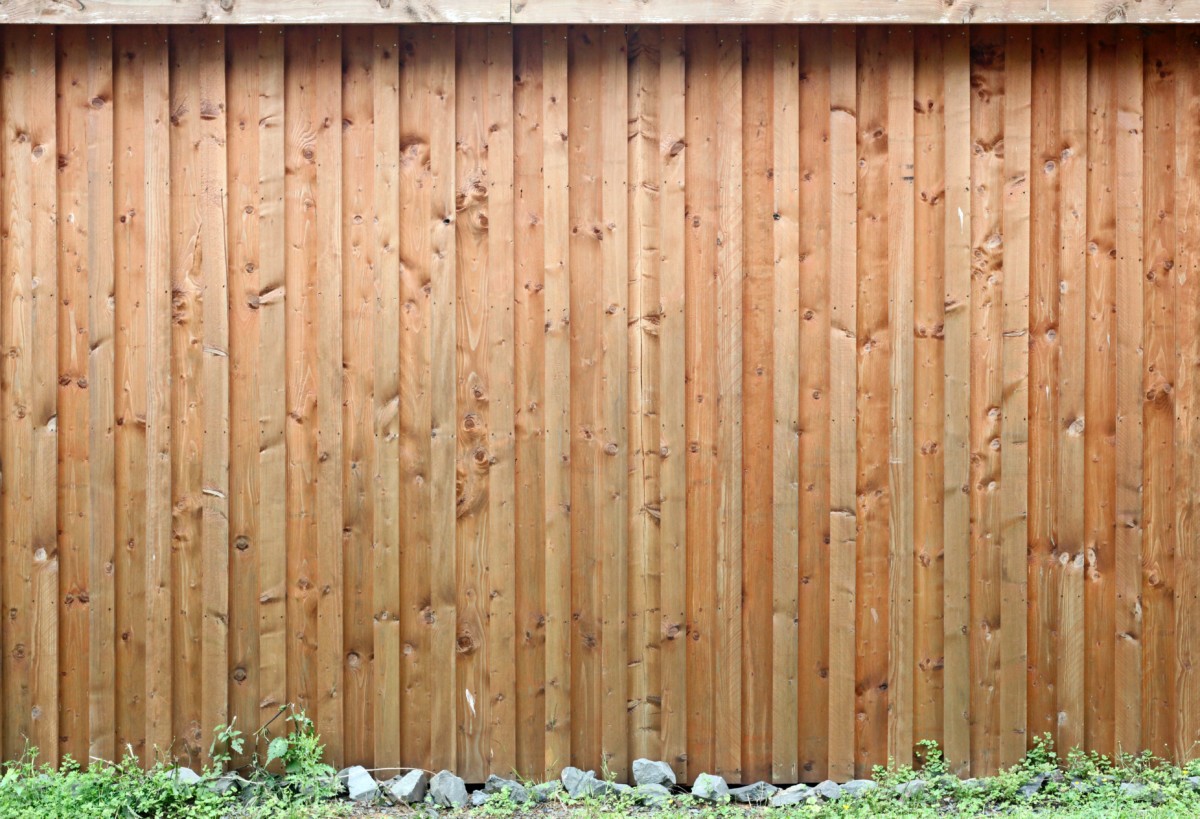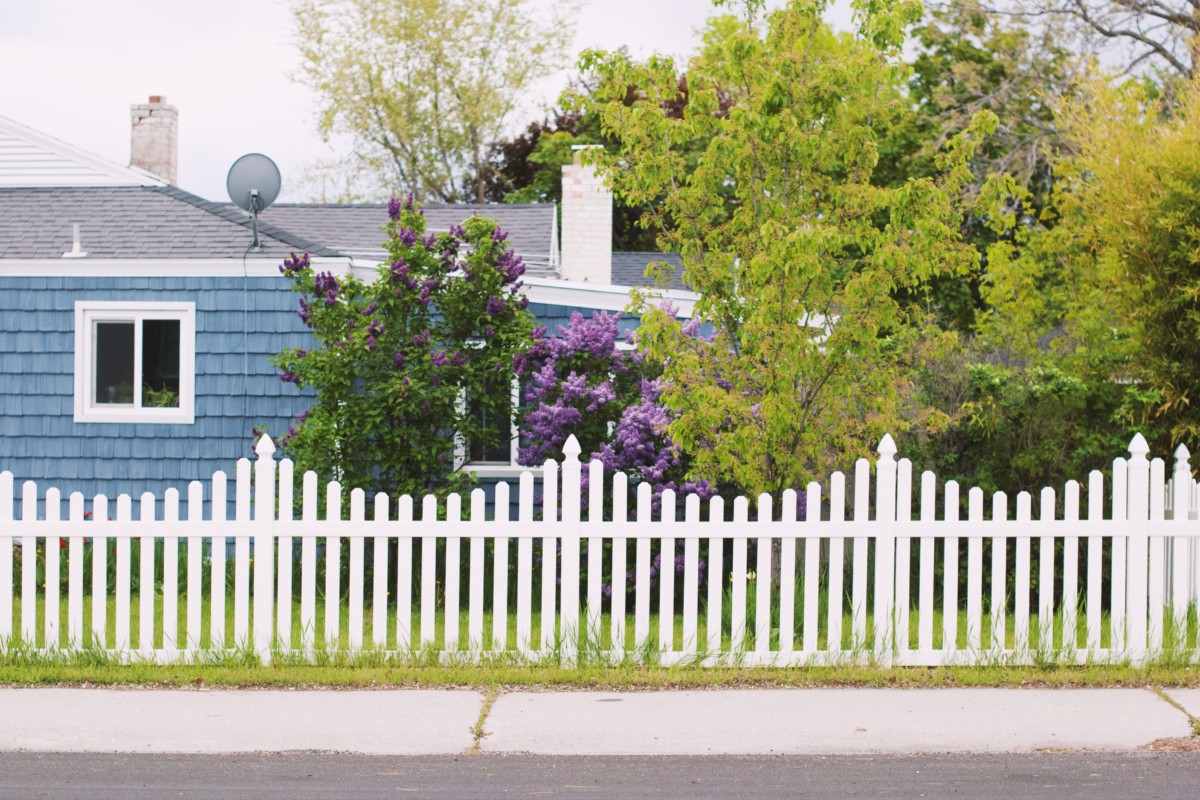Dogs are playful, loving, loyal companions who often add joy to people’s lives. They’re also messy, loud, and require a lot of care. To have the best experience for everyone, many people choose to dog-proof their homes. Building a dog-proof fence is a great way to accomplish this. Most dogs want plenty of time and space to play outside and run around with other dogs, dog-proofing your outdoor space is equally important as the inside.
If you have one, a backyard can be a great place to let your dog loose, go to the bathroom, and spend time outside. However, it’s essential to make sure your yard is fenced-in so your dog can’t escape. So whether you own a dog in Kansas City, MO, or live in Portland, OR, read these expert backyard dog-proofing tips to keep your dog secure.

Consider a privacy fence with a bottom rail
Consider a privacy fence to limit the ability of your dog to see movement on the other side. This is useful because many dogs are triggered by motion. Creating a fully private fence, like a Trex fence, is a long-term consideration. Still, it retains full opacity throughout its lifespan. Wood fences with butted pickets (the most common type) will eventually shrink as the material dries, creating gaps between the boards that allow dogs to see what’s going on outside the fence.
If your dog tries to escape under the fence, look for a product that will reduce that risk. Even digging dogs will have difficulty getting under a fence if the bottom rail is strong enough. With a fence like Trex, we reinforce the bottom rail with metal, which means a dog can’t break the rail and chew out chunks of fencing. Even better, a rot-free material like Trex or vinyl lets you drop the bottom rail right to the ground and even bury it a couple of inches without worrying about it degrading over time. – Trex Fencing
Take your price point into consideration
With a dog-proof fence, you can let your dogs run freely without a leash in an enclosed space. Your pups will be able to enjoy their outdoor time and space without you worrying about them being curious and attempting to escape. The type of fencing material depends on your desired price point, the location of your home, your dog’s breed, and its size and strength. Ultimately, building and investing in a dog fence will keep your dogs contained and protected while giving them ample space to run around. Dog-proof fences are great for potty training. – Romans Fence Co
Dog-proof fencing brings reassurance that your dog is safe
Building a dog-proof fence ensures that your beloved pet is safe and secure even when you’re out all night. Although we don’t recommend leaving your pet unattended for long periods, installing a dog-proof fence ensures that you will find your pet unharmed even if it manages to sneak out of the house. – Nuvo Iron
Wood fences are a great option
A high-quality fence is a great way to prevent your dogs from escaping. Wood Fences are aesthetically pleasing and a great way to avoid easily-excitable dogs from wanting to get out and explore the neighborhood. A six-foot-tall wood privacy fence helps prevent your loveable pet from jumping over and getting away. Wood fences range in price but can be an affordable option for privacy and protection for your pets. – Lisa Toscano from Los Angeles Fencing Co.

Check your fence for damage and give your dogs exercise
We recommend owners periodically check their fence for loose boards, holes, or erosion which could lead to an escape. Providing your dog with mentally stimulating toys, such as puzzles, dig boxes, or kiddie pools, can help occupy them. Giving your dog plenty of exercise each day encourages more relaxed and obedient behavior. It’s important to supervise your pet during playtime, especially when experimenting with new enrichment items. – Freedom Bound Hounds
Choose different fencing depending on the size of your dog
Building a dog fence or gate depends on the dog’s size and the client’s budget. The first thing a homeowner needs to decide is the type of framework they want to use and if they want it to be see-through or completely private. Wood framing is more cost-effective, but because dogs tend to scratch wood, steel framing may be the better choice. You can use a wire mesh or simply vertical or horizontal wooden slats with a gap. The size of the gap depends on the dog’s size and personal preference.
If you’re building a dog-proof fence, it’s essential to pay attention to the bottom of the fence. Depending on the type of material, digging underneath the fence is the best way for dogs to escape. To combat this, dig down approximately 6 to 10 inches and mount wire into the dirt. – Harwell Fencing and Gates, artists from Northern New Mexico that have now settled in Los Angeles and specialize in motorized driveway gates and custom wood and steel fences.
Install a concrete strip beneath your fence
It’s important to mention that some dogs may not be appropriate for backyard fencing. There are many negative effects of your dog running loose. Part of the challenge when planning a dog-proof fence is considering whether your dog is a digger or a jumper; it’s best to prepare for both. To avoid having your dog dig out, run a continuous concrete strip between your fence posts. The strip doesn’t have to be structural; 8″ x 8″ is enough. Build your fence to the maximum height allowed by your local building code, hopefully at least five feet high.
Using natural cedar removes the possibility of your dog chewing off any paint. An excellent fencing option is made out of cedar, with metal wire woven in-between the gaps. This metal material is relatively indestructible and great for growing climbing plants like tomatoes. Build a solid wood fence at the front of your house so your dog doesn’t interact with nearby dogs and potentially bark excessively. – The Street Dog Coalition
Take soil condition into account
Cater your fence to the size of your dog. Do you have a tiny dog? Then you should have a tiny space at the bottom of your gates and fence, with minimal spacing between the planks. Do you have a digging dog? Try burying mesh 6″ into the ground below your fence. In some cases, you may need a 2′ deep concrete curb. Take soil type and condition into account as well. – Wood Fence Expert

 United States
United States Canada
Canada